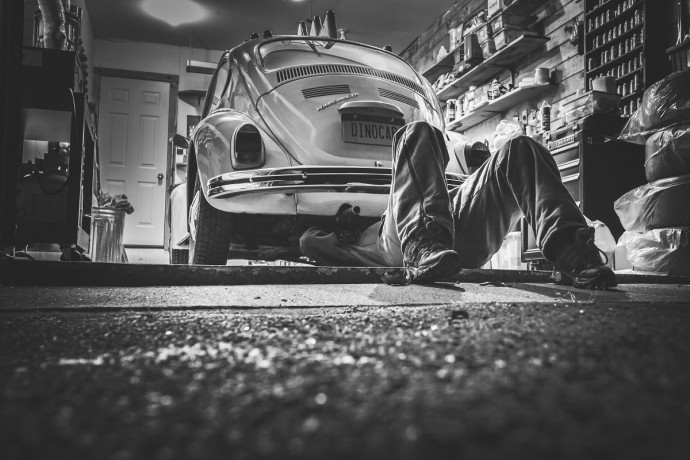As the summer draws to a close, it is important to start preparing your car for the colder months that are creeping closer. The end of summer in Ottawa is the perfect time to do this, as vacations have ended, routine life is resuming and you have time to get all maintenance and car care needed to be fully ready by wintertime. Breakdowns are troublesome and can even be dangerous, especially in cold weather and along icy roads, and I want to help keep you and your family safe as you navigate through even the most inclement weather.
Below is a list of services that you should consider so that by winter you can hit the roads without worrying about the condition of your car. Some of these are tips that you can make use of yourself, without the aid of a shop. But when something doesn’t seem right and you can’t take care of it yourself, call Jim Dickinson Auto Tech in Ottawa today at 613-721-6244, and he’ll get you back on the road in no time!
1). Read the owner’s manual.
It’s easy to toss the owner’s manual somewhere in the back seat and forget about it until you really need it. Give yourself the benefit of time by reading your owner’s manual before you even have any issues with your vehicle. This book should contain the car manufacturer’s recommended service schedules, and it is important to stick with them. There are normally two service schedules listed: Normal and Severe.
2). Don’t neglect engine trouble.
A small problem with your engine can become a big one in no time, so if you’re having problems with your engine such as hard starts, rough idling, stalling and so on, you should bring it to see an Ottawa auto mechanic for a little TLC. Cold weather only makes these problems worse, and through the replacement of dirty filters, PCV and other elements, Jim can bolster your car against the icy conditions that lay ahead.
3). Pay extra attention to your fuel.
A bottle of fuel de-icer should be added to your tank once a month to help keep moisture from freezing within the fuel line. Keeping a gas tank as full as you can also help to ward off unwanted moisture, by preventing it from forming in the first place.
4). Don’t skip oil changes.
Changing your oil and oil filter as specified in your owner’s manual is important to the overall performance of your car. Most manuals specify such an oil change to be done every 3,000 miles or so if your driving is mostly stop-and-go or consists of many short trips.
5). Mind your cooling system.
The cooling system of your vehicle should be flushed out and refilled as recommended by your manufacturer’s manual. Whether you choose to check your coolant or have an expert Ottawa auto repair shop do it for you, it’s important to remember to let the radiator cool completely before removing the cap of the coolant reservoir. During this time, they can also check the condition of your vehicle’s drive belts, clamps and hoses to ensure that they are all in good working order.
6). Have your heater/defroster serviced if necessary.
More than just ensuring passenger comfort, the heater and defroster work to optimize a driver’s visibility, so they are important in overall highway safety. If you are having any issues with your heater or defroster, bring it in to an auto mechanic soon, so that you won’t be caught off-guard by inclement weather.
7). Replace your windshield wipers.
This can be easy to forget about until you need wipers that work well. Before winter, make sure to replace any old and worn blades with new, rubber-clad blades that stand up to the harshness of winter by fighting ice build-up. Make sure to keep some windshield washer solvent on hand (you’ll be surprised how often you’ll end up thankful to have it around), and carry an ice-scraper so that you can increase your visibility on an iced-over windshield before hitting the road.
8). Make sure that your battery is in good working order.
A weak battery can best be detected using professional equipment, but you can do routine maintenance at home between visits to your auto mechanic. Scrape away any corrosion from posts and cable connections, clean all surfaces and re-tighten all connections. If your battery caps are removable, make sure to check your fluid level on a monthly basis.
Avoid contact with deposits and battery acid. Wear eye protection and rubber gloves during the removal of cables, and be mindful that this process can cause damage or loss of data/codes on newer vehicles. Double-check your owner’s manual for more detailed instructions.
9). Inspect your lights.
All lights and bulbs should be inspected, burned-out ones replaced and all cleaned of road grime. To clean the lights in your car, use a moistened cloth or towel. Dry rags can cause scratching.
10). Have your exhaust system looked at.
Your vehicle should be placed on a lift by a professional so that the exhaust system can be closely examined for leaks. The trunk and floorboards should also be inspected to make sure that they are free of holes. The reason for this is because you do not want exhaust making its way inside of your car. It can be deadly.
11). Examine your tires.
Bald or badly worn tires don’t serve much purpose in winter weather, and can actually become quite dangerous. You should examine your tires for signs of a failing tread life, uneven wearing and cupping, as well as cuts and nicks on the sidewalls. Tire pressure should be checked monthly, with the tires being allowed to “cool down” before the pressure is checked. Rotate your tires as recommended by your owner’s manual, and always make sure to remember your spare and a jack-just in case.
12). Prepare for emergencies.
Emergencies can happen in any weather, but winter can be especially hazardous. Make sure to have materials on-hand to help you out should the unexpected happen, such as:
- Gloves
- Boots
- Blankets
- Flares
- A small shovel
- Sand or kitty litter
- Tire chains
- Flashlights (and batteries)
- Your cell phone




